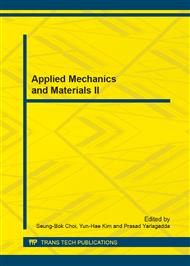p.271
p.277
p.281
p.285
p.295
p.299
p.303
p.307
p.315
Computational Technique of the Sliding Interface in Numerical Simulations of 3D Penetration
Abstract:
Based on the Lagrange finite element method, a simplified computational technique for sliding interface in oblique penetration is proposed in the paper. By applying the 3D finite element program developed on this technique to numerical analog computation of ogive-noded steel rod penetrating in the aluminum target, a result which is consistent with that of A.J.Piekutowskis experiment can be reached. Hence it proves the rationality and validity of the program and method discussed in this paper and that the method is useful in the numerical study of penetration and perforation.
Info:
Periodical:
Pages:
295-298
Citation:
Online since:
December 2013
Authors:
Price:
Сopyright:
© 2014 Trans Tech Publications Ltd. All Rights Reserved
Share:
Citation:


